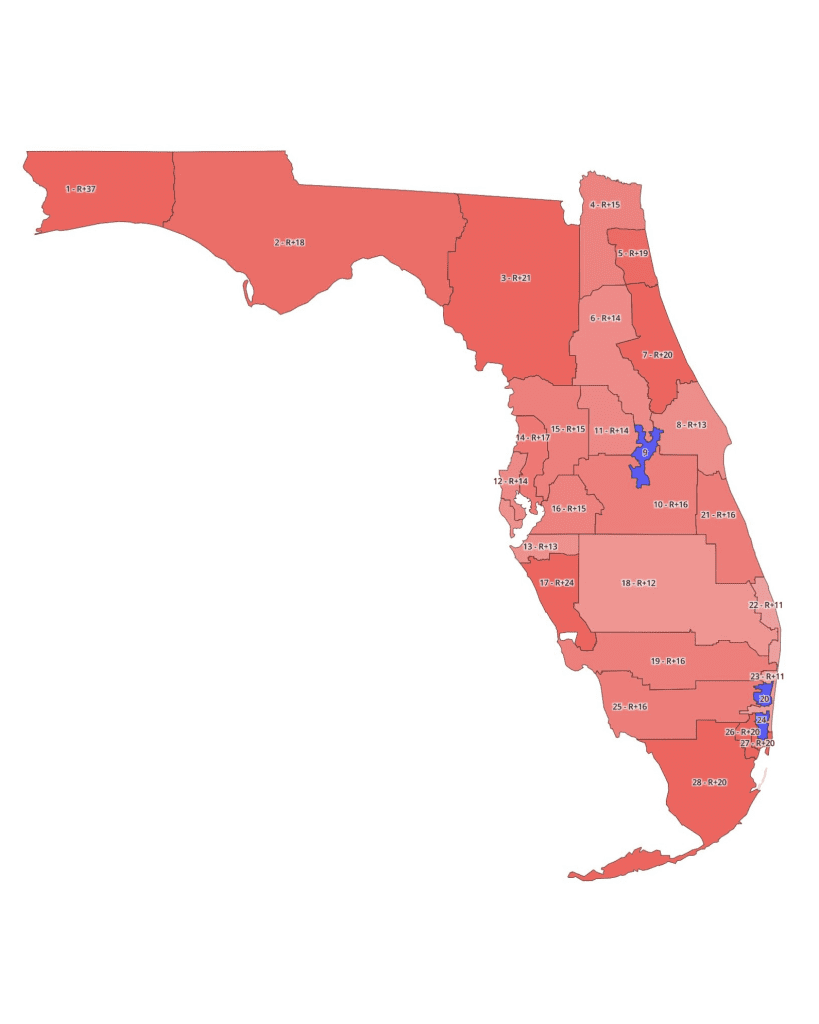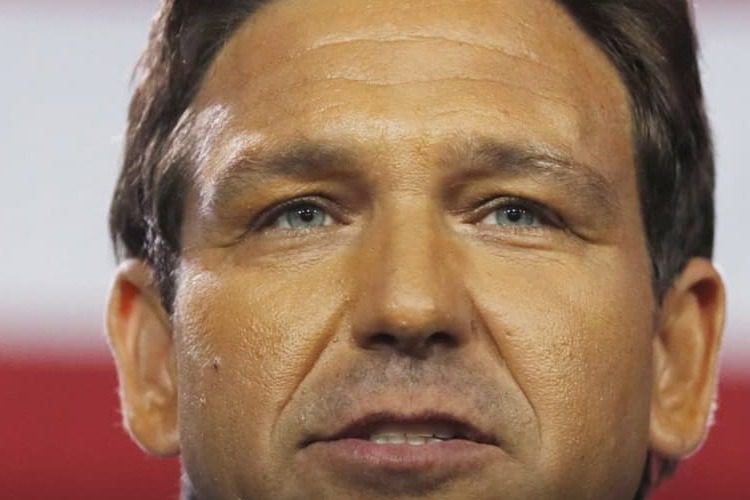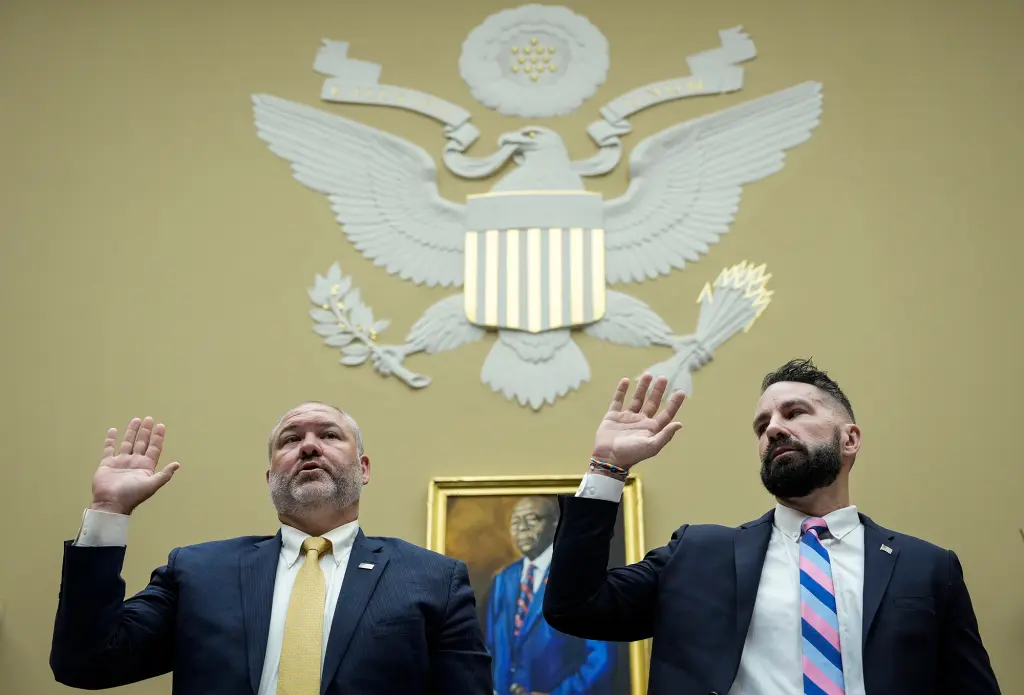Florida Governor Ron DeSantis Teases Game-Changing 2026 Redistricting Overhaul, Promising a Stunning Shift from Blue to Red in the Sunshine State’s Congressional Power Play – ‘Stay Tuned,’ He Hints, as National Stakes Soar
In the sweltering heart of Tallahassee, where the air hangs heavy with the scent of Spanish moss and unspoken ambitions, Governor Ron DeSantis sat at his desk late one November evening, the glow of his phone screen casting sharp shadows across his determined face. It was November 14, 2025, just days after the echoes of the 2024 election still reverberated through the halls of power, and the Republican hold on the U.S. House teetered on a knife’s edge at 220-215. With a flick of his thumb, DeSantis fired off two words that would send shockwaves from the Florida Panhandle to the marble corridors of Capitol Hill: “Stay tuned.” Those words, cryptic yet loaded with promise, were a direct retort to a news wire claiming the Florida House Speaker had ruled out any redistricting push before the 2026 midterms. But anyone who knows DeSantis— the steely-eyed combat veteran turned political powerhouse—understands that when he says “stay tuned,” it’s not an idle tease. It’s a battle cry.

The tweet landed like a thunderclap in a political storm already brewing over America’s electoral maps. Florida, the Sunshine State that had swung decisively red in recent cycles, now stood poised to rewrite its congressional boundaries in a way that could tilt the scales of national power even further toward President Donald Trump’s Republican allies. At the center of this brewing drama is a meticulously crafted map, unveiled by redistricting maestro Thomas Erickson, known online as, a Midwesterner with a knack for slicing through demographic data like a surgeon’s scalpel. Erickson’s proposal isn’t just lines on a page; it’s a vision of transformation, one that would flip five Democratic-held districts into Republican strongholds, slashing the state’s current 20-8 GOP edge to a commanding 25-3. Picture it: the 10th District, home to Maxwell Frost, the youngest member of Congress and a vocal progressive firebrand; the 14th, represented by Kathy Castor, a longtime advocate for environmental causes; the 22nd, Lois Frankel’s coastal enclave; the 23rd, Debbie Wasserman Schultz’s battleground; and the 25th, Jared Moskowitz’s slice of South Florida diversity. All of them, under this blueprint, would bleed red, leaving only three Democratic incumbents—Darren Soto in the 9th, Sheila Cherfilus-McCormick in the 20th, and Frederica Wilson in the 24th—clinging to their seats like survivors in a political shipwreck.
For conservatives who rallied behind Trump in 2024, watching his hard-fought victories translate into policy wins from border security to economic revival, this feels like vindication wrapped in inevitability. DeSantis, ever the loyal foot soldier in the MAGA movement, has long embodied the unyielding spirit that propelled Trump back to the White House. His governance—slashing regulations, standing firm against federal overreach, and championing school choice—mirrors the former president’s blueprint for America First. Now, with the House majority hanging by a thread, this redistricting gambit emerges as a masterstroke, a way to fortify the Republican fortress against the inevitable Democratic onslaught in 2026. Imagine the ripple effects: a five-seat swing doesn’t just pad the GOP’s margin to 225-210; it buys breathing room for Trump’s agenda, shielding key votes on everything from tax cuts to energy independence. Families in Florida’s heartland, those hardworking souls who’ve seen their grocery bills climb and their dreams deferred under years of Washington gridlock, would see their voices amplified, their frustrations finally heard in a Congress that looks more like the nation they know.

Yet, as the sun rises over Miami’s glittering skyline and sets on the quiet farms of the Panhandle, this story isn’t one of unchallenged triumph. It’s laced with the raw tension of a nation grappling with its own soul, where every redraw of lines evokes ghosts of past battles—the gerrymandering wars of the 2010s, the courtrooms filled with accusations of partisan foul play. Florida’s own history is a tapestry of such strife. Back in 2022, DeSantis clashed head-on with the state’s Fair Districts Amendments, voter-approved safeguards from 2010 designed to ban the carving of maps for political gain. He vetoed a congressional plan from his own party, then muscled through his own version, one that nudged two seats toward the GOP while drawing howls from civil rights groups. The Florida Supreme Court ultimately upheld it, but not without bruising the governor’s image among moderates who whispered of overreach. Today, with mid-decade redistricting—a rarity outside of court orders or census upheavals—looming as a fresh frontier, the legal specter looms large once more. Critics, from the ACLU to Democratic operatives, are already sharpening their pencils, poring over Erickson’s map for violations of compactness rules or the dilution of minority voting power under the Voting Rights Act. “This isn’t democracy; it’s dynasty-building,” one Democratic strategist confided off the record, her voice trembling with the weight of what feels like an existential threat.
DeSantis, undeterred, channels the same fierce resolve that saw him through the COVID controversies and the migrant flights that became national headlines. His “stay tuned” wasn’t born in a vacuum. It came hot on the heels of seismic shifts in other red states, where Texas Republicans just inked a map adding five GOP seats amid their own special session, and whispers from California suggest Democrats might counter with gains of their own. But Florida? Florida is the crown jewel, the state that delivered Trump his electoral lifeline in 2024, flipping Miami-Dade County red for the first time in decades and padding his popular vote tally with over a million more supporters than his opponent. DeSantis knows this terrain intimately; as a congressman himself from 2013 to 2018, he navigated its quirks, from the Cuban exile communities in Hialeah that vote with conservative fervor to the retiree enclaves in The Villages that turn out like clockwork. Erickson’s map plays to these strengths, snaking boundaries to consolidate urban blue pockets while expanding rural red expanses, all under the guise of reflecting population booms from New York and California transplants fleeing high taxes and crime.

To understand the human pulse of this moment, step into the life of Maria Gonzalez, a 52-year-old nurse from Orlando’s suburbs, whose story echoes the quiet heroism of so many in the delegation’s crosshairs. Maria voted for Trump in 2024, her first time crossing party lines after years of feeling ignored by politicians more attuned to coastal elites than to the daily grind of double shifts and rising insurance premiums. “I want someone fighting for us, not just talking,” she says, her hands still calloused from years in scrubs, eyes misty as she recalls the border crisis that hit her immigrant family hard. Under the current map, her district leans Democratic, represented by a voice that, in her view, prioritizes global agendas over local relief. Erickson’s redraw would place her in a Republican-leaning seat, one potentially held by a fresh face aligned with DeSantis’ vision—pro-life, pro-business, pro-Florida. For Maria, it’s not about partisanship; it’s redemption, a chance for the state that gave her a new start to finally give back.
Across the state, in the sun-baked precincts of Palm Beach, Lois Frankel’s constituents feel the ground shifting beneath them. Frankel, 76 and a fixture since 2013, has championed women’s rights and Social Security protections, her office a beacon for seniors navigating Medicare mazes. Her district, a mosaic of affluent retirees and young families, has held firm blue, but Erickson’s lines would weave in swaths of conservative exurbs, diluting that blue hue. “We’ve built something here,” a Frankel aide shared, frustration etching her words, “a community that votes for progress, not punishment.” The emotional toll is palpable—campaign volunteers who poured hearts into 2024 door-knocks now face the dread of irrelevance, their efforts redrawn into oblivion. It’s a reminder that redistricting isn’t abstract; it’s the quiet unraveling of trust, the way a family’s dinner table conversation turns somber when the news mentions “gerrymander.”

DeSantis’ push, though, resonates deeply with the GOP base that propelled Trump to victory. Polls from late 2025 show Florida Republicans energized, with approval for mid-decade tweaks hovering at 62 percent among party faithful, per a recent Quinnipiac survey. It’s a sentiment rooted in survival: the House majority, won in the shadow of January 6 recriminations and economic headwinds, can’t afford complacency. Trump’s own orbit buzzes with approval; surrogates like Lara Trump have nodded to Florida’s role as the “tip of the spear” in maintaining conservative momentum. And DeSantis? He’s no stranger to the fray. His 2022 reelection, a 19-point landslide, was a referendum on his map-making mettle, proving Floridians reward boldness. Now, as whispers of his own presidential ambitions swirl—despite his steadfast Trump loyalty—this move cements his legacy as the architect of a red wave that could lap at the nation’s shores for a generation.
But balance demands we confront the counterpoint, the chorus of unease from those who see this as a power grab veiled in populism. Legal eagles at the Brennan Center for Justice warn that Florida’s Fair Districts Amendment, with its prohibitions on maps that “favor or disfavor a political party,” could invite a Florida Supreme Court showdown by spring 2026. Past rulings, like the 2023 affirmation of DeSantis’ Senate map, offer precedent for the governor, but the addition of five seats pushes the envelope, potentially inviting federal scrutiny under racial gerrymandering claims. Black voters in districts like the 24th, where Frederica Wilson has long amplified civil rights, fear fragmentation—lines that splinter communities of color, echoing the Voting Rights Act battles of yesteryear. “It’s not just seats; it’s souls,” a community organizer in Miami Gardens lamented, her voice cracking over a phone line from a voter registration drive. Democrats, licking wounds from 2024 losses, counter with vows of reciprocity: if blue states like New York or Illinois redraw aggressively, the national map could seesaw back, turning 2026 into a zero-sum grudge match.
As the legislative session looms in March 2026, the Florida House’s Select Committee on Congressional Redistricting—convened quietly in August—will become ground zero. Speaker Danny Perez, a DeSantis ally, has kept cards close, but insiders leak talk of special sessions mirroring Texas’ playbook, where Governor Greg Abbott summoned lawmakers for a map marathon that netted Republican gains without census pretense. The emotional stakes climb with each passing day: families divided by new boundaries, incumbents penning farewell speeches, volunteers trading yard signs for protest placards. For Trump supporters, it’s a thrilling chapter in the redemption arc, a Florida-forged shield against liberal resurgence. DeSantis, ever the storyteller, frames it as stewardship—protecting the will of the people who rejected Bidenomics and embraced Make America Great Again. “Florida isn’t just a state; it’s a movement,” he told a raucous crowd at a Tampa rally last month, his words met with chants that drowned out the doubters.
In the end, this redistricting saga is more than partisan chess; it’s the heartbeat of a democracy in flux, where every line drawn carries the weight of hopes deferred and futures reclaimed. As DeSantis’ tweet fades into the digital ether, its promise lingers like the humid Florida dusk—full of possibility, shadowed by peril. Will Erickson’s map become law, handing Trump a bolstered House and etching DeSantis into the pantheon of GOP titans? Or will courts intervene, preserving a fragile equilibrium? Only time, and the voters it empowers, will tell. But one thing is certain: in the Sunshine State, where dreams bloom as fiercely as the bougainvillea, the fight for fair representation is far from over. It’s just getting started, and America is watching, hearts pounding, as the next chapter unfolds.



